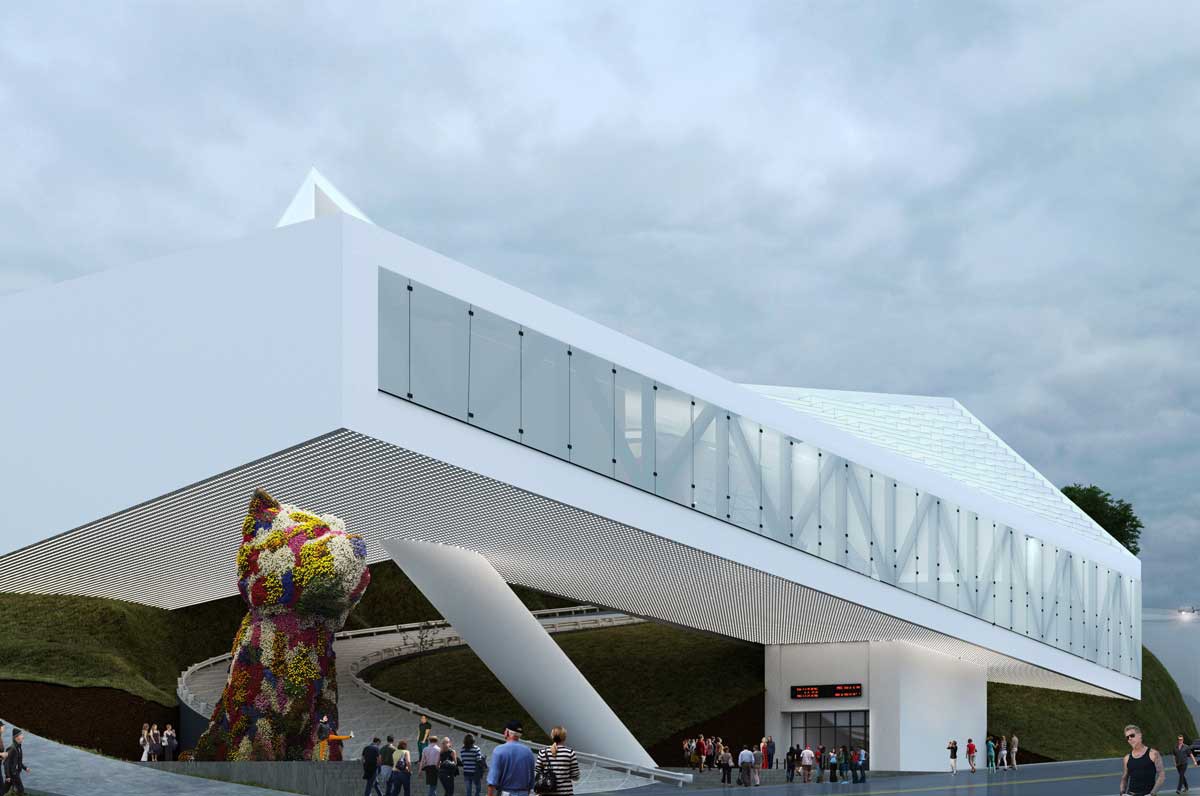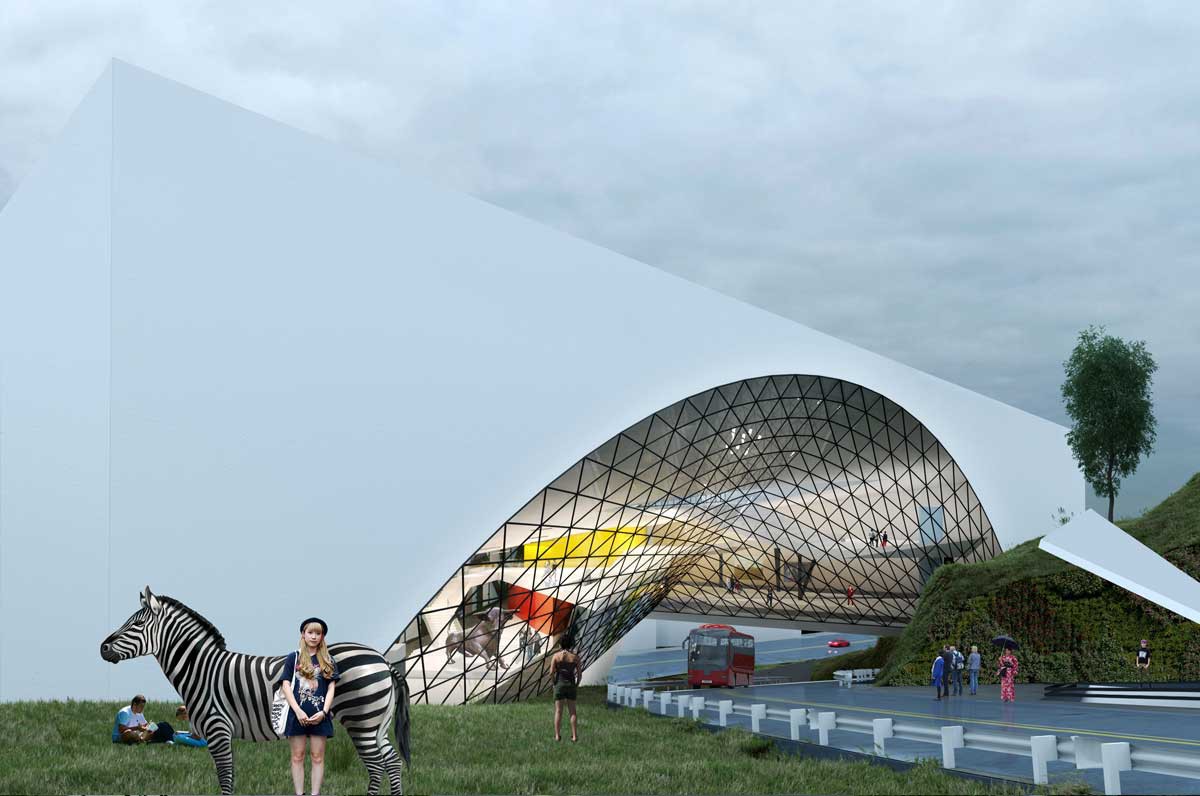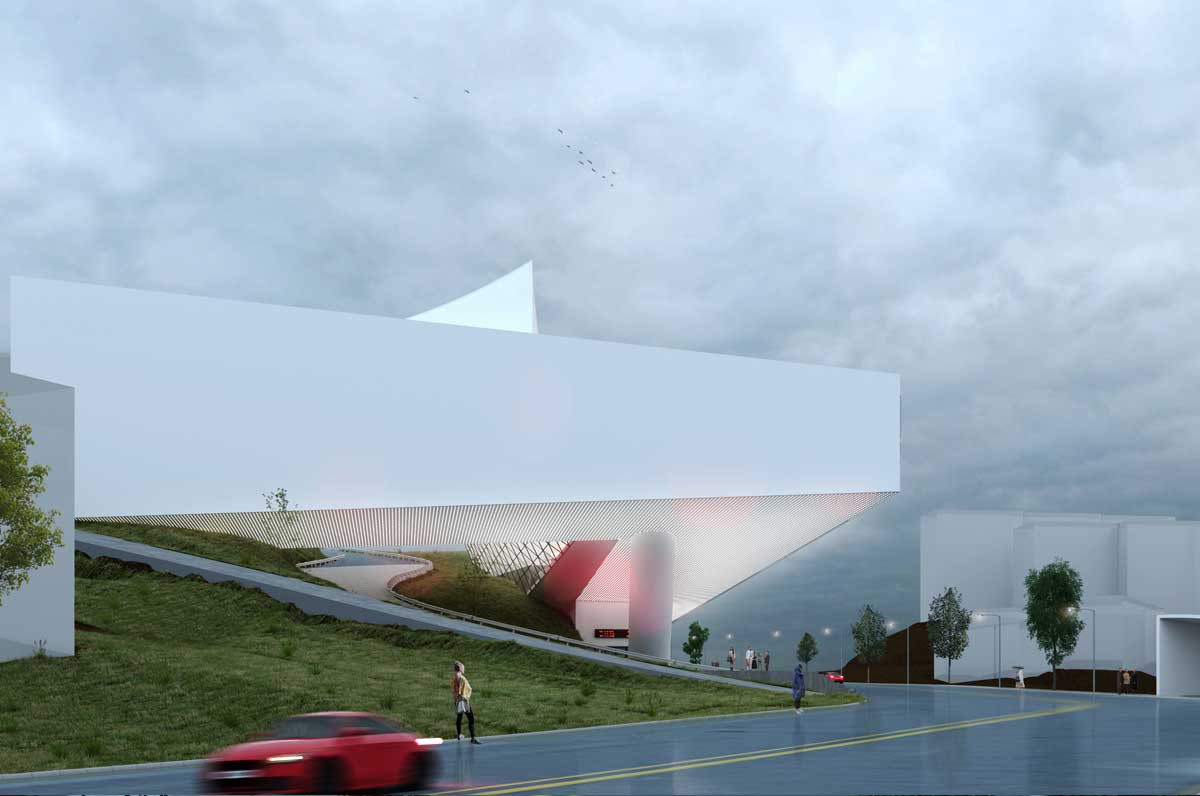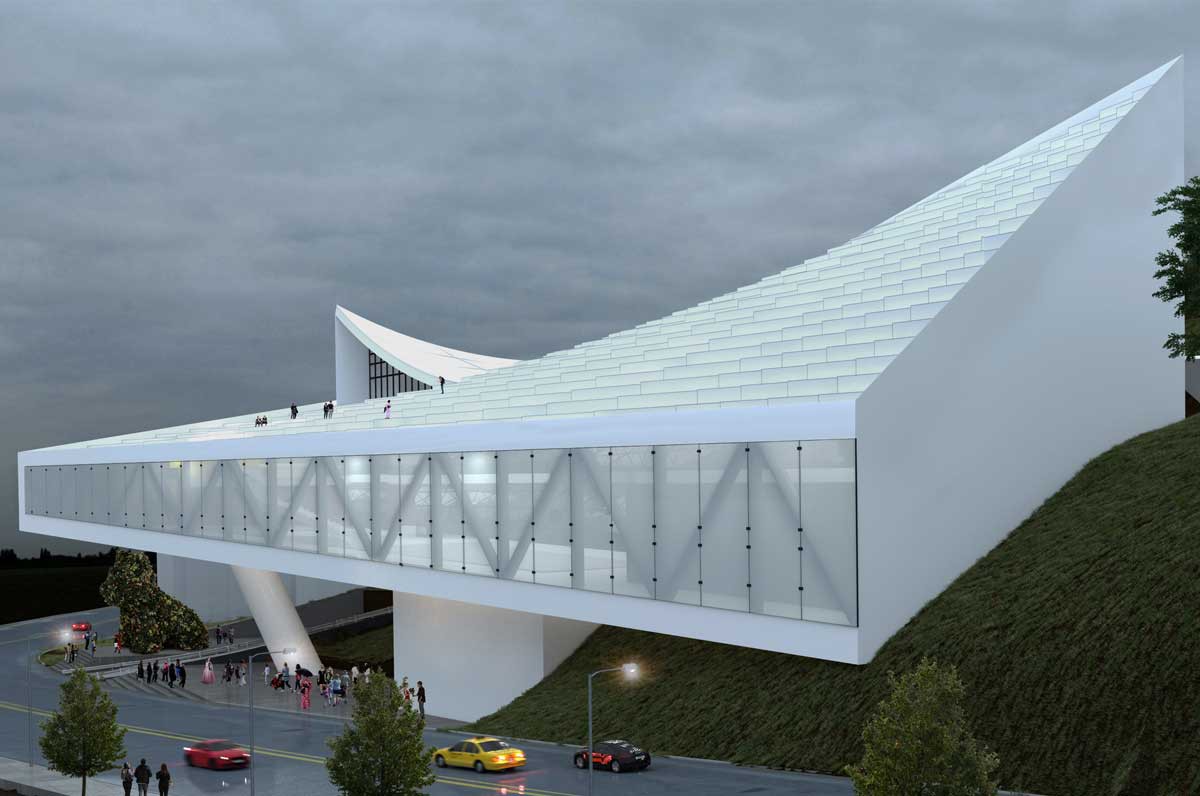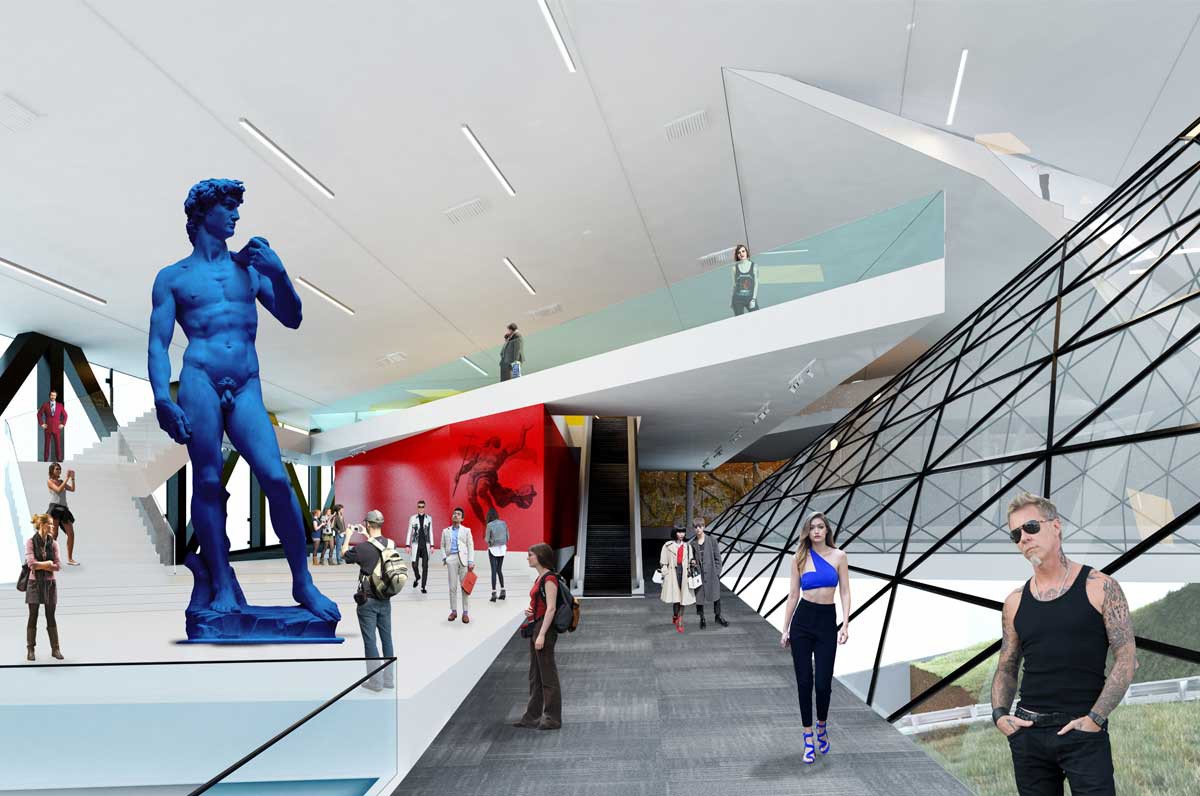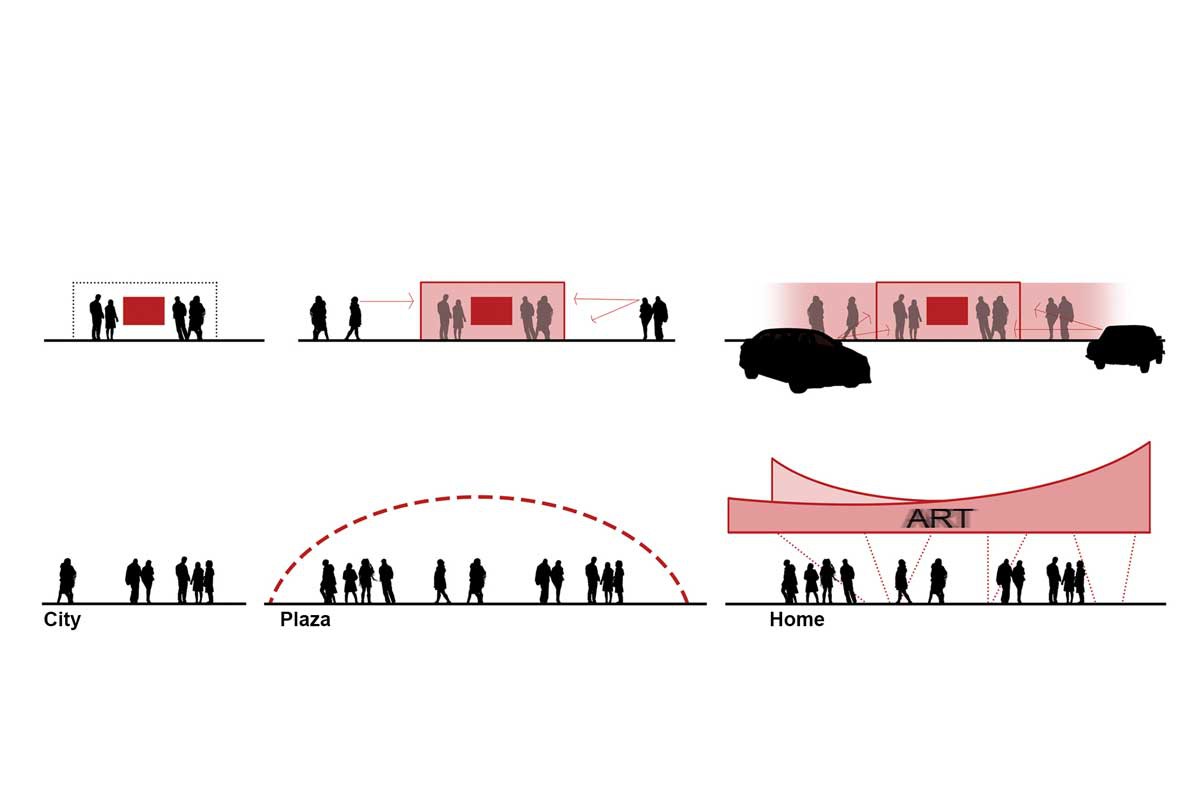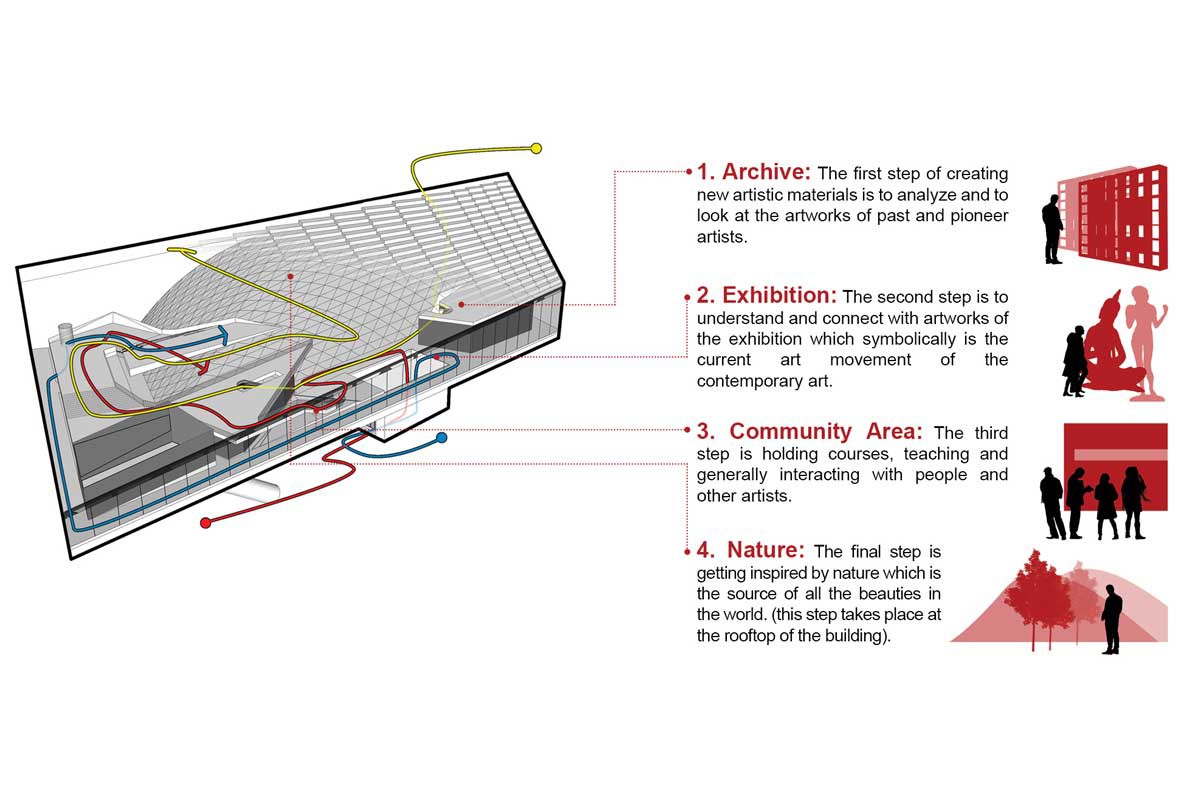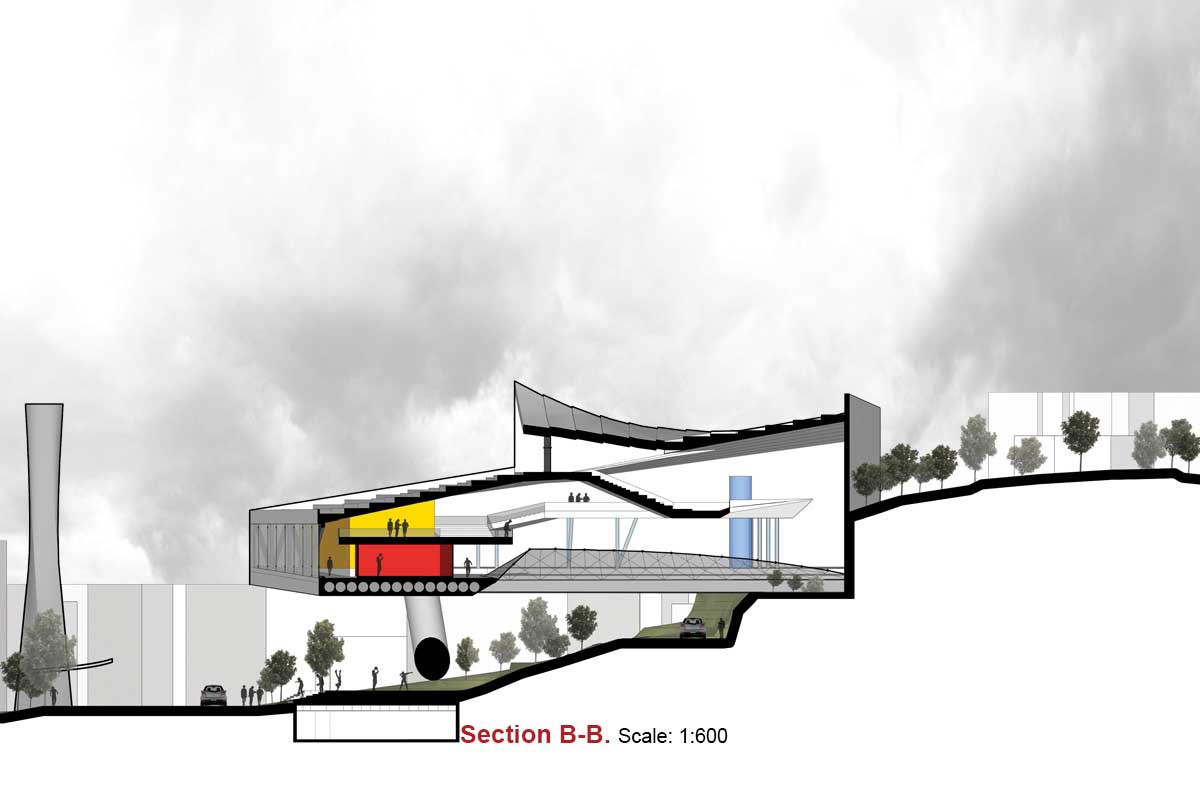Seoul Art Complex
Seoul Art Complex
Architects in charge: Hesam Alavi, Emad Kashfi
Status: Competition
Year: 2016
General approach of placing the required areas is placing the mass volume in specified site locations, but in this project, considering the streets which have crossed the site and divided the site in four different segments, it will lead to creation of separate volumes, connected through a bridge or a subway, and therefore an integrated shape will not be achieved. Considering the site’s geometry, a monolith volume has been placed in two more bigger segments of the site with distance away from the main street level, creating an open plaza for pedestrian level leading to more interactions with urban space, with least occupancy of the topography of the site and in the end the volume of the building will be simple and integrated as well as distinct and illustrative. The roof of the building is formed by following two issues: a. Highest possible height in each segments of site (20m) for optimal use of the interior space and building volume diagnosis. b. Inspiration from traditional Korean roofs. 4- The main sustained shaft of the volume acts as a main entrance gate to pedestrian leveled plaza and the console basis. The entrance to the roof has been attached to the volume with inspiration from traditional Korean architecture and combination with modern geometries. 5- The inner part of the volume has been extracted due to the car traffic. This extraction has been formed with conversion of two sides of the site into one semicircular by an abstract of Geodesic domes geometry. This way places for presenting art works, educational parts and etc. will benefit from indirect North light so as the whole building interacts more with crossing cars beneath. Therefore, activities inside can be seen from outer space and meanwhile preserved from access. 6- Interior of the Museum is designed -inspired by the art of traditional Korean garden (Susok)- in a dynamic form, in order to combine, merge and overlap the open and closed spaces and the public and private areas. Boxes with basic colors, which remind us of both Mondrian paintings and early days of modern art and the Dancheong (traditional decorative coloring on wooden buildings), are placed in motion spaces and have different functions for the complex. 7- The final shape of the complex’s roof is shaped by parametric boxes which reminds us of old Korean clay ceilings. In addition to confirming the formal aspect of the roof it would be possible for the visitors of the complex to use it as a sightseeing spot towards nature and the city.
Copyright © 2016 Designed by BanyWeb. All rights reserved.

